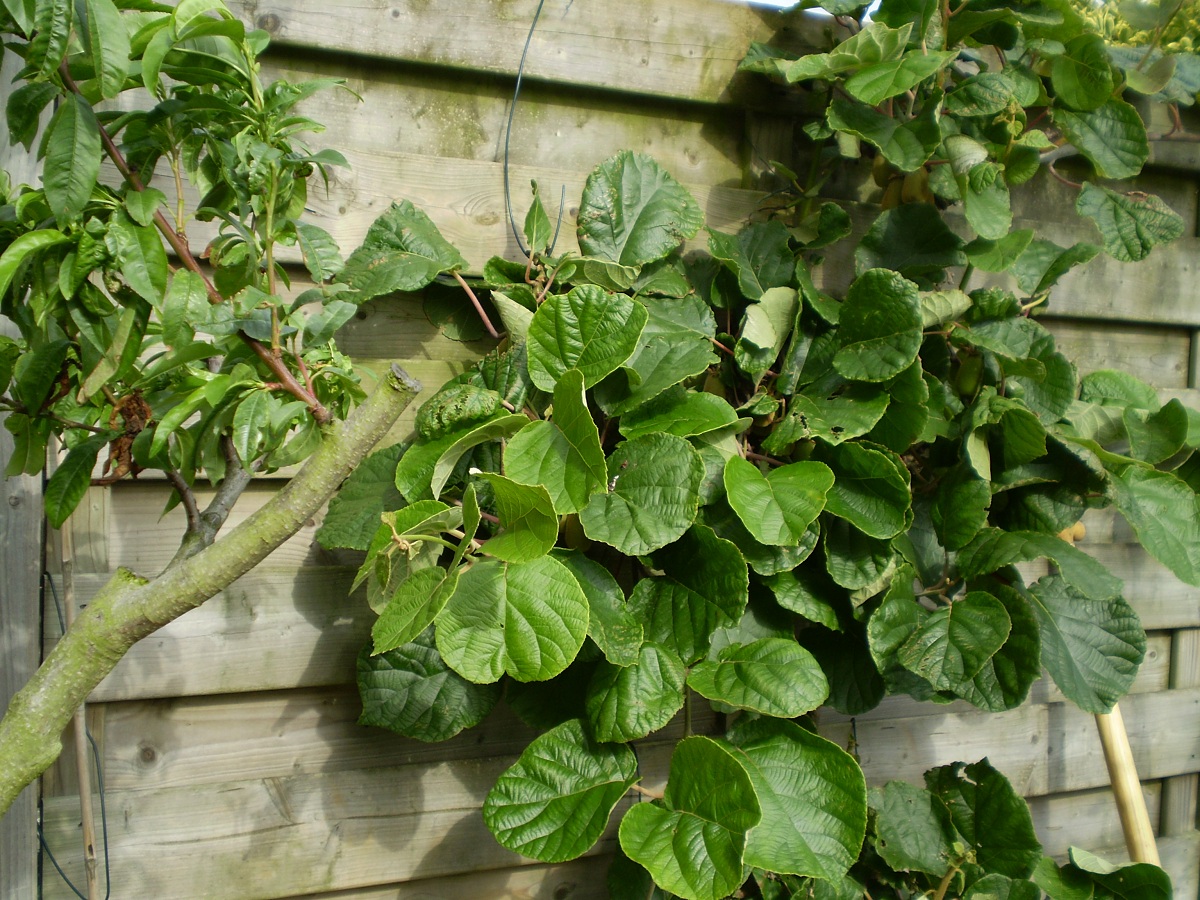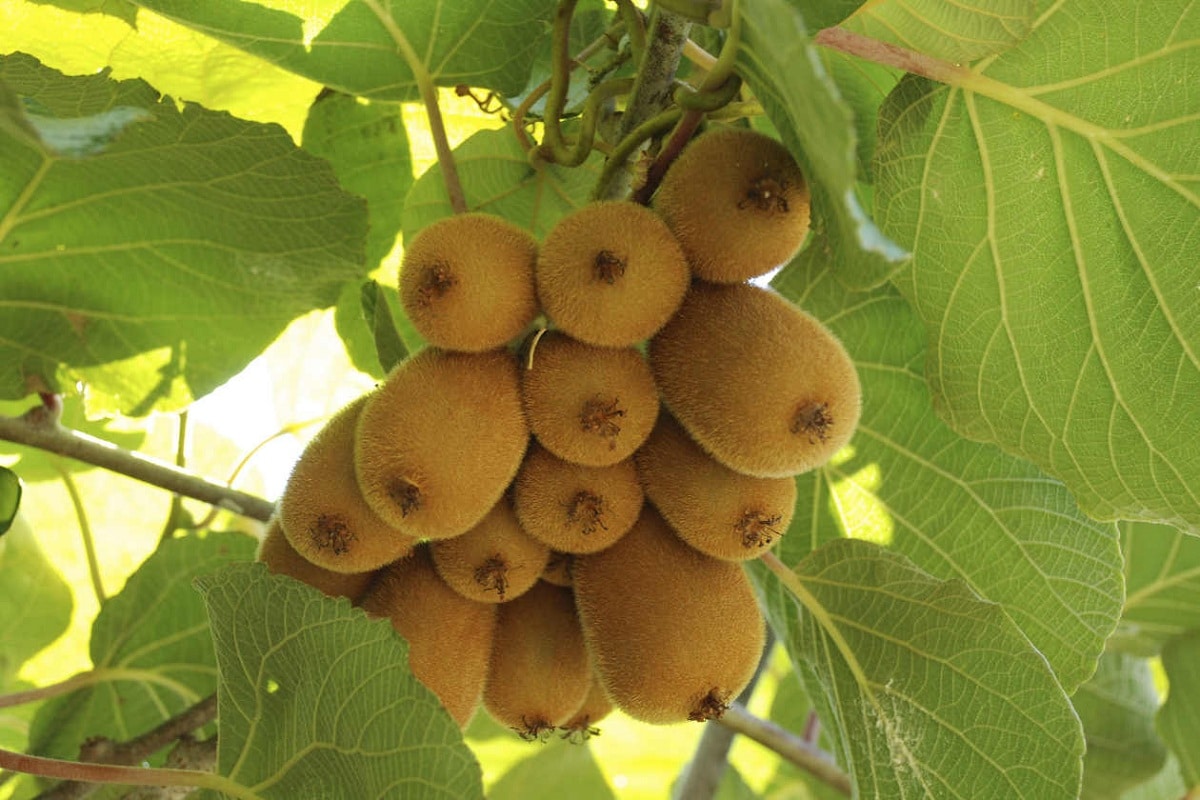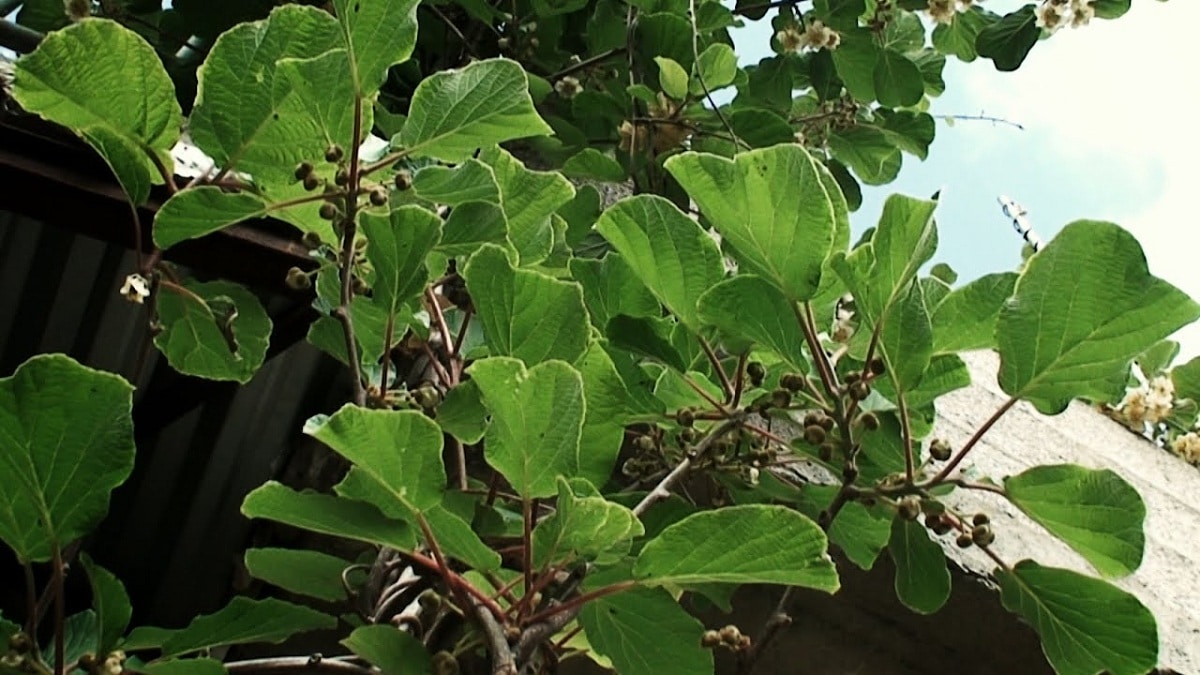
If you are a novice person who wants to start the world of gardening, one of the most recommended plants is the kiwi. Its cultivation is quite simple and has a good reward, since almost everyone likes kiwi. It does not have too much care or requirements for its maintenance. Therefore, it is a very interesting plant to have. Here we are going to teach you how to care for a kiwi plant, in addition to all its main characteristics and beneficial properties for health.
If you want to know how to care for a kiwi plant, this is your post.
Key features

The kiwi is a plant whose cultivation is suitable for beginners, since it grows quickly and is very resistant. What's more, withstands frosts down to -7ºC, so it can be had outside in many parts of the world, and if it is colder in our area, it will be enough to protect it in a greenhouse. It is a climbing plant native to China and was introduced to New Zealand in 1906. It is a tree that belongs to the family Actinidiaceae.
Currently the countries that most cultivate this tree are New Zealand, Italy, Chile, Greece and France. One of the main characteristics of this plant is that it does not tolerate puddles. Namely, you will need is planted in well-draining soil. We will see this later when we talk about the needs of your crop.
It is a woody climbing plant whose leaves are of the deciduous type. They have an elongated and rounded shape. We can also highlight the presence of small villi on the leaves. Its leaves can reach a size of up to 30 centimeters long. They are hermaphroditic type leaves with a creamy white color and 5 well-defined petals. Each flower has a female and a male sexual apparatus.
The most normal thing to do to grow kiwis is oval in shape. The kiwi fruit has the same name as the tree and is a type of berry of a large size. It usually acquires a series way of life and with an external color of a dark brown hue with a fibrous and hairy skin. The pulp inside is green and They have a large quantity of black seeds that are edible. These seeds are what make the kiwi fruit had a lot of fiber. The ripening of the fruit usually lasts about a month and takes place in the month of April. Its texture is quite soft and it has a characteristic flavor.
We can say that the kiwi plant is not a tree itself or a plant that can survive any terrain. Although it is a simple plant to start in this world, it makes the terrain and climate where they can develop have to be very specific. This makes the countries that host this crop have great wealth since it involves a large amount of income from the export of this fruit considered exotic.
How to care for a kiwi plant

The kiwi plant grows very quickly, but for this you need sturdy supports (wooden stakes, for example) that are attached with wires. These wires are where the plant will spread its branches. But in addition to the support, it will also be necessary to prepare the ground. How to do it? A) Yes:
- The first thing to do is remove the wild herbs. If the terrain is wide, a rototiller can be used; otherwise a hoe will suffice.
- It is then raked to make it as level as possible.
- Then a thick layer, about 5-8cm, of fermented cow manure is added.
- The supports are placed leaving a distance of 4m between them.
- And finally the kiwi is planted.
Hereinafter, it will have to be watered regularly, especially during the warm months avoiding that the earth remains dry. In this way, the plant will grow without problems.
Although if you want to get an excellent harvest you have to make sure you have a male and a female specimen, or a grafted one. Unfortunately, the kiwi plant is a dioecious plant, so if we do not have a large orchard we may be more interested in buying one grafted specimen than two without grafting.
Nor can we forget about the subscriber. It needs many nutrients to be able to fruit properly, especially nitrogen (N), phosphorus (P) and potassium (K). So that, during the growing season it will be fertilized with nitrogen, which is the fundamental element for good vegetative development, but when it blooms and bears fruit it must be fertilized with NPK.
Following these tips, the kiwis will be ready to harvest in autumn, around October-November in Spain.
Properties of the kiwi plant

Once we learn how to care for a kiwi plant, we must know that we are going to gain numerous health benefits. And it is that the kiwi has very good characteristics that are beneficial for health. Among them we see the following:
- It is rich in vitamin C and antioxidants: Although the fame of vitamin C is the orange, the kiwi is richer in it. This vitamin helps the correct functioning of the immune system and protects us from oxidation and delays aging. Just by consuming two kiwis a day we can cover the daily needs of vitamin C in an adult.
- Facilitate digestion: having a large amount of fiber will help facilitate digestion. Also, it is the only fruit that contains actinidin. It is an enzyme that helps us digest the proteins in meat, dairy, and leaves and stimulates the digestive process.
- It has few calories: It only has 57 calories for each one gram of product. Avoid recommended for any type of diet as it has a large amount of water and is low in fat.
- It is a good natural source of folic acid: for all those women who are pregnant, the consumption of kiwi is highly recommended as it has folic acid.
- Low glycemic index: the carbohydrates in this fruit are not assimilated too quickly and the glucose is partially released into the bloodstream. It helps reduce the risk of diabetes and heart conditions.
I hope that with this information you know about how to care for a kiwi plant.
Thank you for the report, very instructive, look for the report because a while ago I bought kiwi, there were two left that no one ate and when I saw that they were already spoiling I sowed them at the bottom, the land is very fat and suitable for cultivation and taking weeds I discovered it for myself astonishment and pleasure.Thanks friends.saludos.bendiciones !!!!
Brilliant. Thanks for commenting, Mirta.